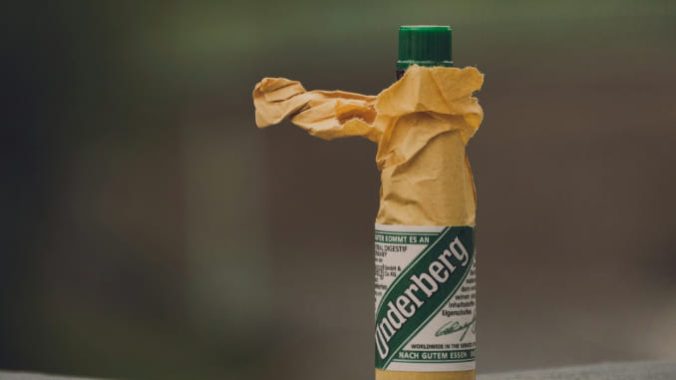I Didn’t Know What Underberg Was, And I Was Too Afraid To Ask: The Story Behind Craft Beer’s Favorite Herbal Digestif
Photo by Jovita Braun/Unsplash
Have You Seen This Digestif?
If you’ve been to a lot of breweries or taprooms, odds are you may have noticed tiny bottles wrapped in brown paper behind the bar. If you’ve spent enough time at these places, you may have witnessed customers buying these tiny bottles and shaking them directly into their mouths, often accompanied by the bartender. If you’re observant, you may have noticed the bartender collecting the green caps after everyone’s finished their doses. If you’re like me, you never asked what the hell was going on.
I first encountered Underberg under these exact conditions in 2018 at a craft beer bar in Columbus, Ohio. I didn’t order one, nor did I ask. I was new to craft beer (and drinking), and everyone was shooting them with the self-assuredness of an inside joke, and I dared not interrupt. In the years following, I saw the same ritual unfolding across a number of breweries, taprooms and bottle shops. Still, I kept to myself.
It wasn’t until 2023 while working at a taproom that I found out what they were. I showed up for my usual opening shift one day where that week’s beer delivery was waiting for me. Amongst all the expected arrivals for the week, there was a 30-pack of Underberg herbal bitters. At the time, the taproom only had two employees; my manager didn’t order it, and I hadn’t asked him to. The shipment was from one of our distributors who had a reputation for adding items to our orders, throwing in this-or-that item because you have to have it. Apparently, that was the case with Underberg. In his own words, “You’re not a taproom if you don’t sell Underberg.” Surely enough, it sold.
They were the same 20 ml glass bottles wrapped in brown paper that I had come to recognize. Only now, they were going to be behind my bar, and I was supposed to be the bartender (or beertender) chugging them with the customers. Finally holding a box of them in my own hand, I read that Underberg is a German herbal digestif produced in Rheinberg, consisting of herbs sourced from 43 different countries. Oh, and it’s 44% ABV.
-

-

-

-

-

-

-

-

-

-

-

-

-

-

-

-

-

-

-

-

-

-

-

-

-

-

-

-

-

-

-

-

-

-

-

-

-

-

-

-








































